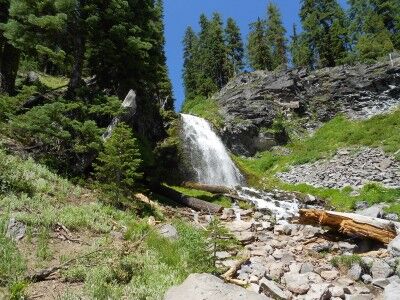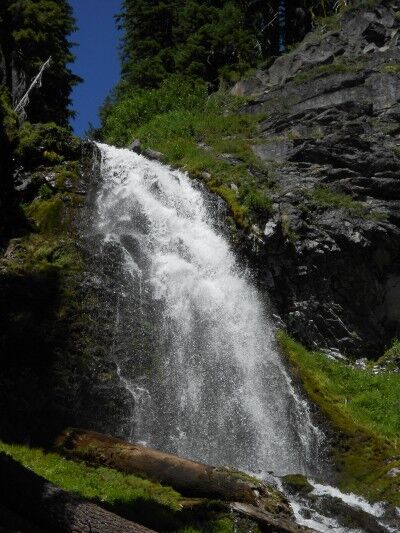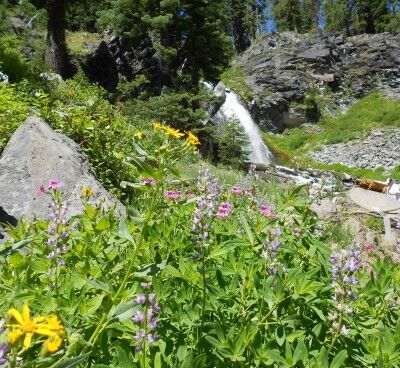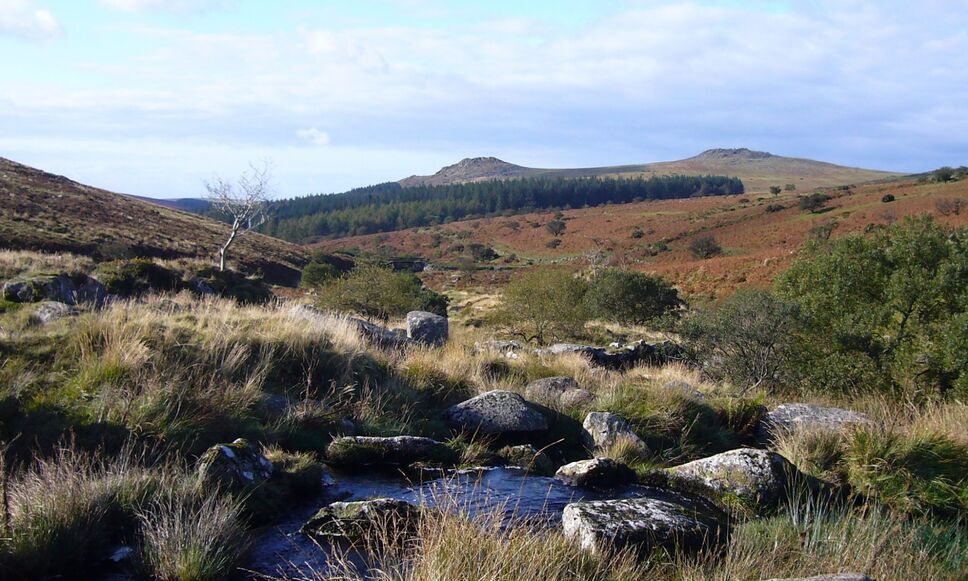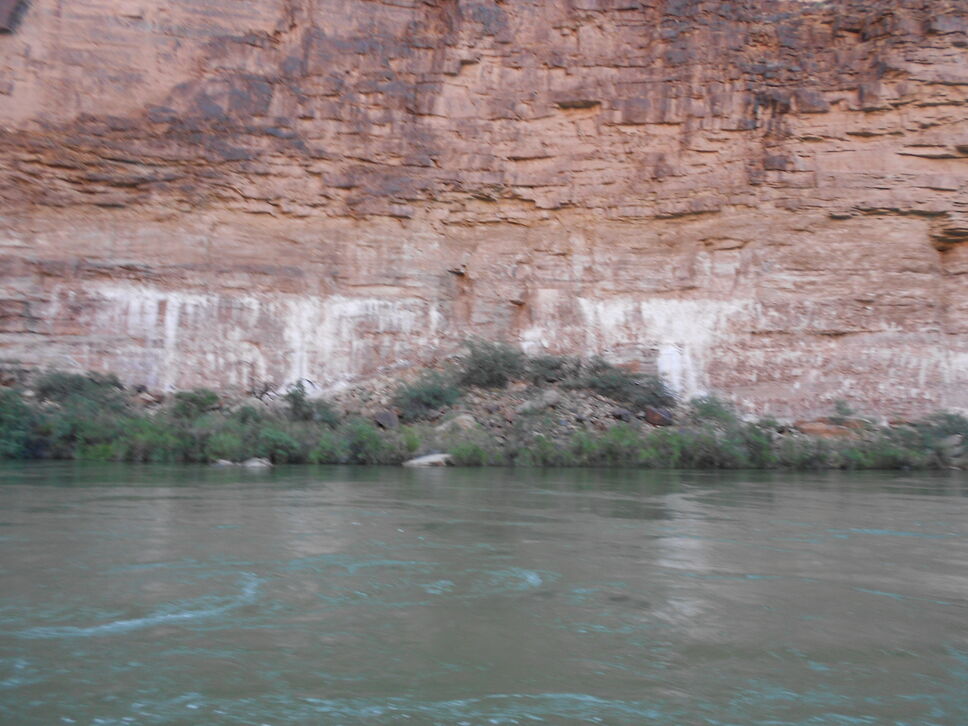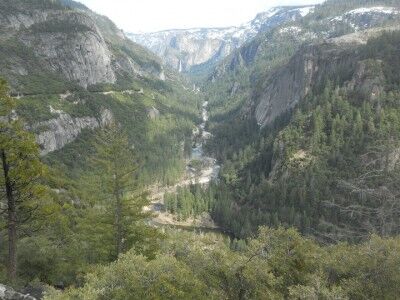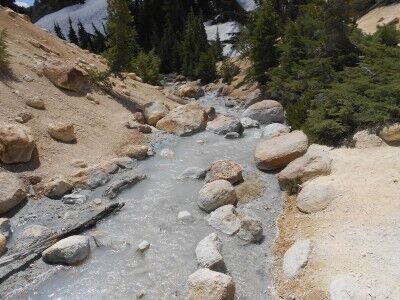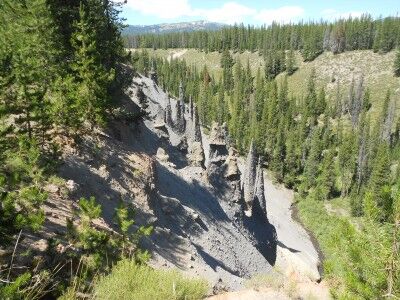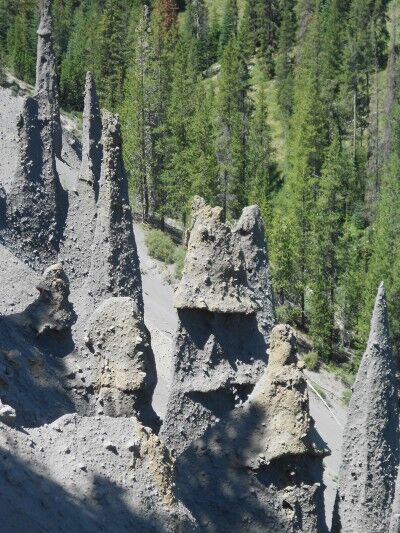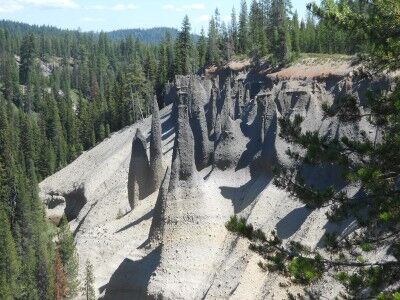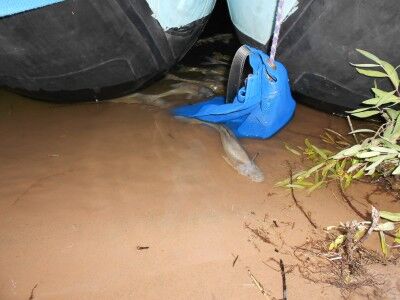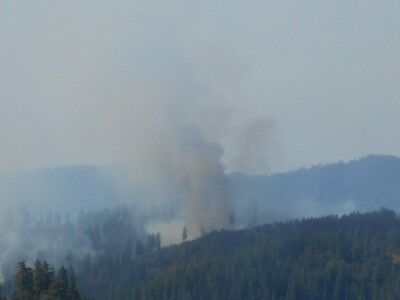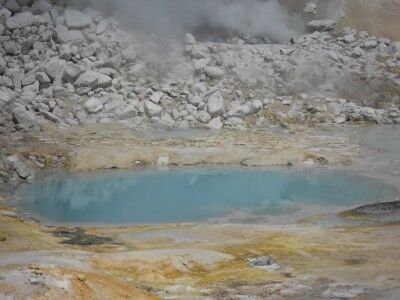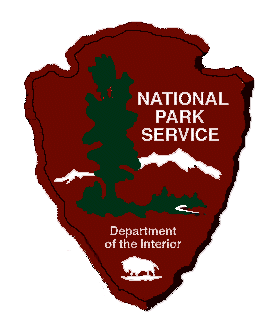
What is not commonly known is that the vast majority of the nearly 400 parks in the National Parks system do not charge any entrance fee at all. Of those that do charge an entrance fee, there is usually a fee per car and or a fee per individual entering the National Park. The following is a list of all the parks in the National Parks system that usually charge a fee to gain entrance to the park. The parks on this list waive the fee on National Parks fee free days.
Arizona
Casa Grande Ruins National Monument entrance fee:
$5 per adult
Chiricahua National Monument entrance fee:
$5 per adult
Glen Canyon National Recreation Area entrance fee:
$15 per vehicle / $7 per individual adult
Grand Canyon National Park entrance fee:
$25 per vehicle / $12 per individual adult
Lake Mead National Recreation Area entrance fee:
$10 per vehicle / $5 per individual adult
Montezuma Castle National Monument entrance fee:
$5 per adult
Organ Pipe Cactus National Monument entrance fee:
$8 per vehicle / $4 per individual adult
Petrified Forest National Park entrance fee:
$10 per vehicle / $5 per individual adult
Pipe Spring National Monument entrance fee:
$5 per adult
Saguaro National Park entrance fee:
$10 per vehicle / $5 per individual adult
Sunset Crater Volcano National Monument entrance fee:
$5 per adult
Tonto National Monument entrance fee:
$3 per adult
Tumacacori National Historical Park entrance fee:
$3 per adult
Tuzigoot National Monument entrance fee:
$5 per adult
Walnut Canyon National Monument entrance fee:
$5 per adult
Wupatki National Monument entrance fee:
$5 per adult
Arkansas
Fort Smith National Historic Site entrance fee:
$4 per adult
Pea Ridge National Military Park entrance fee:
$10 per vehicle / $5 per individual adult
California
Cabrillo National Monument entrance fee:
$5 per vehicle / $3 per individual adult
Death Valley National Park entrance fee:
$20 per vehicle / $10 per individual adult
John Muir National Historic Site entrance fee:
$3 per adult
Joshua Tree National Park entrance fee:
$15 per vehicle / $5 per individual adult
Lassen Volcanic National Park entrance fee:
$10 per vehicle / $5 per individual adult
Lava Beds National Monument entrance fee:
$10 per vehicle / $5 per individual adult – Only accepts cash or checks, no debit or credit cards
Muir Woods National Monument entrance fee:
$5 per adult
Pinnacles National Monument entrance fee:
$5 per vehicle / $3 per individual adult
Sequoia National Park entrance fee:
$20 per vehicle / $10 per individual adult
Whiskeytown National Recreation Area entrance fee:
$5 per vehicle
Yosemite National Park entrance fee:
$20 per vehicle / $10 per individual adult
Colorado
Black Canyon of the Gunnison National Park entrance fee:
$15 per vehicle / $7 per individual adult
Colorado National Monument entrance fee:
$10 per vehicle / $5 per individual adult
Dinosaur National Monument entrance fee:
No entrance fees charged in 2011 until after the Quarry Visitor Center and Exhibit Hall open on October 4
Florissant Fossil Beds National Monument entrance fee:
$3 per individual adult – Only accepts cash or checks, no debit or credit cards
Great Sand Dunes National Park and Preserve entrance fee:
$3 per individual adult
Hovenweep National Monument entrance fee:
$6 per vehicle / $3 per individual adult
Mesa Verde National Park entrance fee:
$15 per vehicle / $8 per individual adult: May 29 – September 5, 2011. All other times: $10 per vehicle / $5 per individual adult
Rocky Mountain National Park entrance fee:
$20 per vehicle / $10 per individual adult
Florida
Canaveral National Seashore entrance fee:
$3 per adult
Castillo de San Marcos National Monument entrance fee:
$6 per adult: San Marcos is considering increasing its admission fee to $7 per adult
Dry Tortugas National Park entrance fee:
$5 per adult
Everglades National Park entrance fee:
$10 per vehicle / $5 per individual adult
Gulf Islands National Seashore entrance fee:
$8 per vehicle / $3 per individual adult
Georgia
Chattahoochee River National Recreation Area entrance fee:
$3 per adult
Chickamauga and Chattanooga National Military Park entrance fee:
No entrance fee. Point Park at Lookout Mountain Battlefield: $3 per adult
Cumberland Island National Seashore entrance fee:
Entrance fee is $4 per adult. Ferry fee is $20 per adult round trip
Fort Frederica National Monument entrance fee:
$3 per adult
Fort Pulaski National Monument entrance fee:
$5 per adult
Hawaii
Haleakalā National Park entrance fee:
$10 per vehicle / $5 per individual adult
Hawaii Volcanoes National Park entrance fee:
$10 per vehicle / $5 per individual adult
Pu’uhonua o Hōnaunau National Historical Park entrance fee:
$5 per vehicle / $3 per individual adult
Idaho
Craters of the Moon National Monument entrance fee:
$8 per vehicle / $4 per individual adult
Yellowstone National Park entrance fee:
$25 per vehicle / $12 per individual adult / $20 per snowmobile or motorcycle
Illinois
Jefferson National Expansion Memorial National Memorial entrance fee:
Varying prices for tram, movie and riverboat or combinations: see here
Indiana
Lincoln Boyhood National Memorial entrance fee:
$5 per family / $3 per individual adult
Maine
Acadia National Park entrance fee:
$20 per vehicle June 23-early October; $10 per vehicle May 1-June 22 and early October-October 31 / $5 per individual adult
Maryland
Antietam National Battlefield entrance fee:
$6 per family / $4 per individual adult
Assateague Island National Seashore entrance fee:
$15 per vehicle / $10 per motorcycle / $3 per individual adul
Chesapeake and Ohio Canal National Historical Park entrance fee:
$5 per vehicle / $3 per individual adult
Fort McHenry NM and Historic Shrine National Monument entrance fee:
$7 per adult
Fort Washington Park entrance fee:
$5 per vehicle / $3 per individual adult
Harpers Ferry National Historical Park entrance fee:
$6 per vehicle / $4 per individual adult
Mississippi
Gulf Islands National Seashore entrance fee:
$8 per vehicle / $3 per individual adult
Massachusetts
Adams National Historical Park entrance fee:
$5 per adult
Cape Cod National Seashore entrance fee:
$15 per vehicle / $3 per individual adult
Michigan
Isle Royale National Park entrance fee:
$4 per adult
Sleeping Bear Dunes National Lakeshore entrance fee:
$10 per vehicle / $5 per individual adult
Minnesota
Pipestone National Monument entrance fee:
$10 per vehicle / $5 per individual adult
Mississippi
Vicksburg National Military Park entrance fee:
$8 per vehicle / $4 per individual adult
Missouri
Harry S Truman National Historic Site entrance fee:
$4 per adult
Jefferson National Expansion Memorial National Memorial entrance fee:
Varying prices for tram, movie and riverboat or combinations: see here
Wilson’s Creek National Battlefield entrance fee:
$10 per vehicle / $5 per individual adult
Montana
Bighorn Canyon National Recreation Area entrance fee:
$5 per vehicle
Glacier National Park entrance fee:
Summer: $25 per vehicle / $12 per individual adult: May 1 – November 30
Winter: $15 per vehicle / $10 per individual adult: December 1 – April 30
Little Bighorn Battlefield National Monument entrance fee:
$10 per vehicle / $5 per individual adult
Yellowstone National Park entrance fee:
$25 per vehicle / $12 per individual adult / $20 per snowmobile or motorcycle
Nebraska
Scotts Bluff National Monument entrance fee:
$5 per vehicle / $3 per individual adult
Nevada
Death Valley National Park entrance fee:
$20 per vehicle / $10 per individual adult
Lake Mead National Recreation Area entrance fee:
$10 per vehicle / $5 per individual adult
New Hampshire
Saint-Gaudens National Historic Site entrance fee:
$5 per adult
New Jersey
Thomas Edison National Historical Park entrance fee:
$7 per adult
Morristown National Historical Park entrance fee:
$4 per adult
New Mexico
Aztec Ruins National Monument entrance fee:
$5 per adult
Bandelier National Monument entrance fee:
$12 per vehicle / $6 per individual adult
Capulin Volcano National Monument entrance fee:
$5 per vehicle
Carlsbad Caverns National Park entrance fee:
$6 per adult
Chaco Culture National Historical Park entrance fee:
$8 per vehicle / $4 per individual adult
El Morro National Monument entrance fee:
$3 per adult
Fort Union National Monument entrance fee:
$3 per adult
Gila Cliff Dwellings National Monument entrance fee:
$10 per family / $3 per adult
Pecos National Historical Park entrance fee:
$3 per adult
White Sands National Monument entrance fee:
$3 per adult
New York
Eleanor Roosevelt National Historic Site entrance fee:
$8 per adult for Val-Kill Guided Tour
Home of Franklin D. Roosevelt National Historic Site entrance fee:
$14 per adult
Martin Van Buren National Historic Site entrance fee:
$12 per family / $5 per adult
Sagamore Hill National Historic Site entrance fee:
$5 per adult
Saratoga National Historical Park entrance fee:
$5 per vehicle / $3 per individual adult
Vanderbilt Mansion National Historic Site entrance fee:
$8 per adult for Vanderbilt Mansion Guided Tour
North Carolina
Wright Brothers National Memorial entrance fee:
$4 per adult
North Dakota
Theodore Roosevelt National Park entrance fee:
$10 per vehicle / $5 per individual adult
Ohio
James A. Garfield National Historic Site entrance fee:
$5 per adult
Perry’s Victory and International Peace Memorial National Memorial entrance fee:
$3 per adult
Oklahoma
Fort Smith National Historic Site entrance fee:
$4 per adult
Oregon
Crater Lake National Park entrance fee:
$10 per vehicle / $5 per individual adult
Lewis & Clark National Historical Park entrance fee:
$3 per adult
Pennsylvania
Allegheny Portage Railroad National Historic Site entrance fee:
$4 per adult
Fort Necessity National Battlefield entrance fee:
$5 per adult
Johnstown Flood National Memorial entrance fee:
$4 per adult
Steamtown National Historic Site entrance fee:
$7 per adult, Train rides $5 per individual
Puerto Rico
San Juan National Historic Site entrance fee:
$3 per adult for 1 fortification, $5 per adult for both fortifications
South Carolina
Fort Sumter National Monument entrance fee:
No entrance fee for visitors who arrive by private boat. Ferry concessioner does not accept America the Beautiful National Parks and Federal Recreational Lands Passes. Ferry tickets are: Adults: $17 Seniors: $15 Children (6-11): $10 Infants (5 and Under): Free
South Dakota
Badlands National Park entrance fee:
$15 per vehicle / $10 per motorcycle / $7 per individual adult
Jewel Cave National Monument entrance fee:
Enterance to grounds is free. Cave tours: $8 per adult / $4 per youth ages 6-16
Tennessee
Chickamauga and Chattanooga National Military Park entrance fee:
No entrance fee. $3 per adult for Point Park at Lookout Mountain Battlefield
Shiloh National Military Park entrance fee:
No fee for Corinth Civil War Interpretive Center. $5 per family / $3 per adult for Shiloh Battlefield
Texas
Big Bend National Park entrance fee:
$20 per vehicle / $10 per individual adult
Fort Davis National Historic Site entrance fee:
$3 per adult
Guadalupe Mountains National Park entrance fee:
$5 per adult
Padre Island National Seashore entrance fee:
$10 per vehicle / $5 per individual adult
Utah
Arches National Park entrance fee:
$10 per vehicle / $5 per individual adult
Bryce Canyon National Park entrance fee:
$25 per vehicle / $12 per individual adult
Canyonlands National Park entrance fee:
$10 per vehicle / $5 per individual adult
Capitol Reef National Park entrance fee:
$5 per vehicle / $3 per individual adult
Cedar Breaks National Monument entrance fee:
$4 per adult
Dinosaur National Monument entrance fee:
Entrance fees will not be charged in 2011 until after the Quarry Visitor Center and Exhibit Hall open on October 4
Glen Canyon National Recreation Area entrance fee:
$15 per vehicle / $7 per individual adult
Golden Spike National Historic Site entrance fee:
Summer: $7 per vehicle / $4 per individual adult
Winter: $5 per vehicle / $3 per individual adult
Hovenweep National Monument entrance fee:
$6 per vehicle / $3 per individual adult
Natural Bridges National Monument entrance fee:
$6 per vehicle / $3 per individual adult
Zion National Park entrance fee:
$25 per vehicle / $12 per individual adult
Virgin Islands
Christiansted National Historic Site entrance fee:
$3 per adult
Virginia
Appomattox Court House National Historical Park entrance fee:
Memorial Day until Labor Day: $10 per vehicle / $4 per individual adult
Off Season: $5 per vehicle / $3 per individual adult
Assateague Island National Seashore entrance fee:
$15 per vehicle
Colonial National Historical Park entrance fee:
$10 per adult
George Washington Memorial Parkway’s Great Falls Park entrance fee:
$5 per vehicle / $3 per individual adult
Manassas National Battlefield Park entrance fee:
$3 per adult
Petersburg National Battlefield entrance fee:
$5 per vehicle / $3 per individual adult
Prince William Forest Park entrance fee:
$5 per vehicle / $3 per individual adult
Shenandoah National Park entrance fee:
March through November: $15 per vehicle / $10 per motorcycle / $5 per individual adult
December through February: $10 per vehicle / $10 per motorcycle / $5 per individual adult
Washington
Fort Vancouver National Historic Site entrance fee:
$5 per family / $3 per individual adult
Lewis & Clark National Historical Park entrance fee:
$3 per adult
Mount Rainier National Park entrance fee:
$15 per vehicle / $5 per individual adult
Olympic National Park entrance fee:
$15 per vehicle / $5 per individual adult
Whitman Mission National Historic Site entrance fee:
$3 per adult
West Virginia
Harpers Ferry National Historical Park entrance fee:
$6 per vehicle / $4 per individual adult
Wyoming
Bighorn Canyon National Recreation Area entrance fee:
$5 per vehicle
Devils Tower National Monument entrance fee:
$10 per vehicle / $5 per individual adult
Fort Laramie National Historic Site entrance fee:
$3 per adult
Grand Teton National Park entrance fee:
$25 per vehicle / $20 per motorcycle / $12 per individual adult. Good for both Grand Teton and Yellowstone national parks
Yellowstone National Park entrance fee:
$25 per vehicle / $20 per motorcycle / $12 per individual adult. Good for both Grand Teton and Yellowstone national parks
If you know of any National Parks fee changes that have taken place, please contact me so I can update this list.
